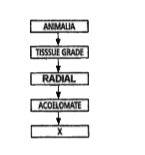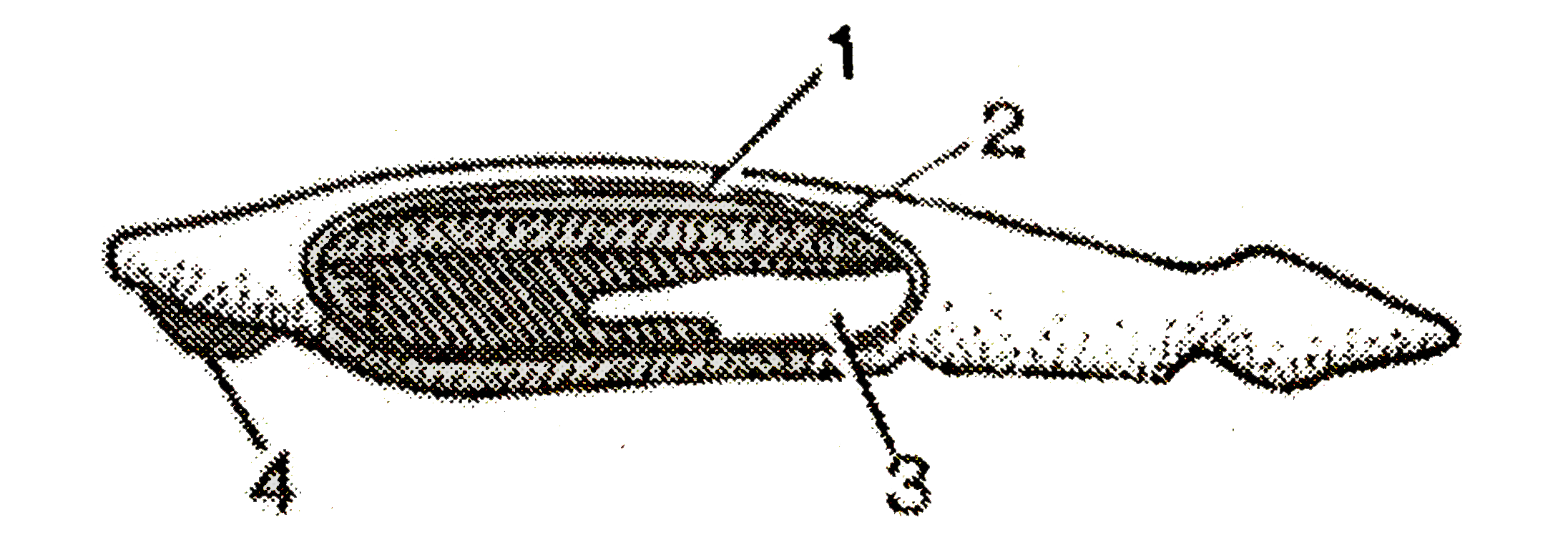Identify the phylum in which the notochord is retained in the adult stage.
Chordata
Craniata
Protochordata
Echinodermata
The correct Answer is:C
To identify the phylum in which the notochord is retained in the adult stage, we can follow these steps:
1. Understand the Notochord: The notochord is a flexible rod-like structure that provides support to the body. It is a characteristic feature of chordates and is crucial for the development of the spinal cord.
2. Identify the Groups of Animals: The animals with a notochord are primarily classified under the phylum Chordata. Within this phylum, there are different sub-groups, including vertebrates and non-vertebrates.
3. Differentiate Between Life Stages: In many chordates, the notochord is present during the embryonic stage but may be replaced by a vertebral column (spine) in adults. However, some animals retain the notochord throughout their life.
4. Focus on Specific Groups:
- Craniata: This group includes animals with a skull, such as lampreys, where the notochord is present but may not be retained in the adult stage.
- Protochordates: This group includes organisms like amphioxus (lancelets), where the notochord is retained in the adult stage.
5. Conclusion: The phylum where the notochord is retained in the adult stage is Protochordata. This group includes organisms that exhibit chordate characteristics throughout their life, including the retention of the notochord.
Final Answer:
The phylum in which the notochord is retained in the adult stage is Protochordata.
---
- Craniata: This group includes animals with a skull, such as lampreys, where the notochord is present but may not be retained in the adult stage.
- Protochordates: This group includes organisms like amphioxus (lancelets), where the notochord is retained in the adult stage.
The phylum in which the notochord is retained in the adult stage is Protochordata.
Topper's Solved these Questions
- BOOK - PEARSON IIT JEE FOUNDATIONCHAPTER - DIVERSITY IN LIVING WORLD- ANIMALSEXERCISE - MASTERING THE CONCEPTS (KNOWLEDGE AND UNDERSTANDING)48videos
DIVERSITY IN LIVING WORLD- ANIMALS
- BOOK - PEARSON IIT JEE FOUNDATIONCHAPTER - DIVERSITY IN LIVING WORLD- ANIMALSEXERCISE - MASTERING THE CONCEPTS (APPLICATION AND ANALYSIS)28videos
DIVERSITY IN LIVING WORLD- ANIMALS
- BOOK - PEARSON IIT JEE FOUNDATIONCHAPTER - DIVERSITY IN LIVING WORLD- ANIMALSEXERCISE - ASSESSMENT TESTS44videos
DIVERSITY IN LIVING WORLD- ANIMALS
- BOOK - PEARSON IIT JEE FOUNDATIONCHAPTER - DIVERSITY IN LIVING WORLD - PLANTSEXERCISE - ASSESSMENT TESTS20videos
DIVERSITY IN LIVING WORLD - PLANTS
- BOOK - PEARSON IIT JEE FOUNDATIONCHAPTER - HUMAN HEALTH AND DISEASESEXERCISE - ASSESSMENT TESTS29videos
HUMAN HEALTH AND DISEASES
Similar Questions
Knowledge Check
- Question 1 - Select One
Identify the phylum X
 AHemichordataBAschelminthesCPlatyhelminthesDCtenophora
AHemichordataBAschelminthesCPlatyhelminthesDCtenophora - Question 2 - Select One
Identify the Phylum X.
 AHemichordataBAschelminthesCPlatyhelminthesDCtenophora
AHemichordataBAschelminthesCPlatyhelminthesDCtenophora - Question 3 - Select One
Identify the phylum in which symmetry is radial in adults but bilateral in larvae.
AChordataBCraniataCProtochordataDEchinodermata
Identify the phylum in which endocrine system appeared for the first time.
View Solutionin which of the following notochord is absent
View SolutionIn which the following notochord is absent?
View SolutionNotochord occurs in the adult animal of
View SolutionIdentify the phylum without tissue level organization.
View Solution


